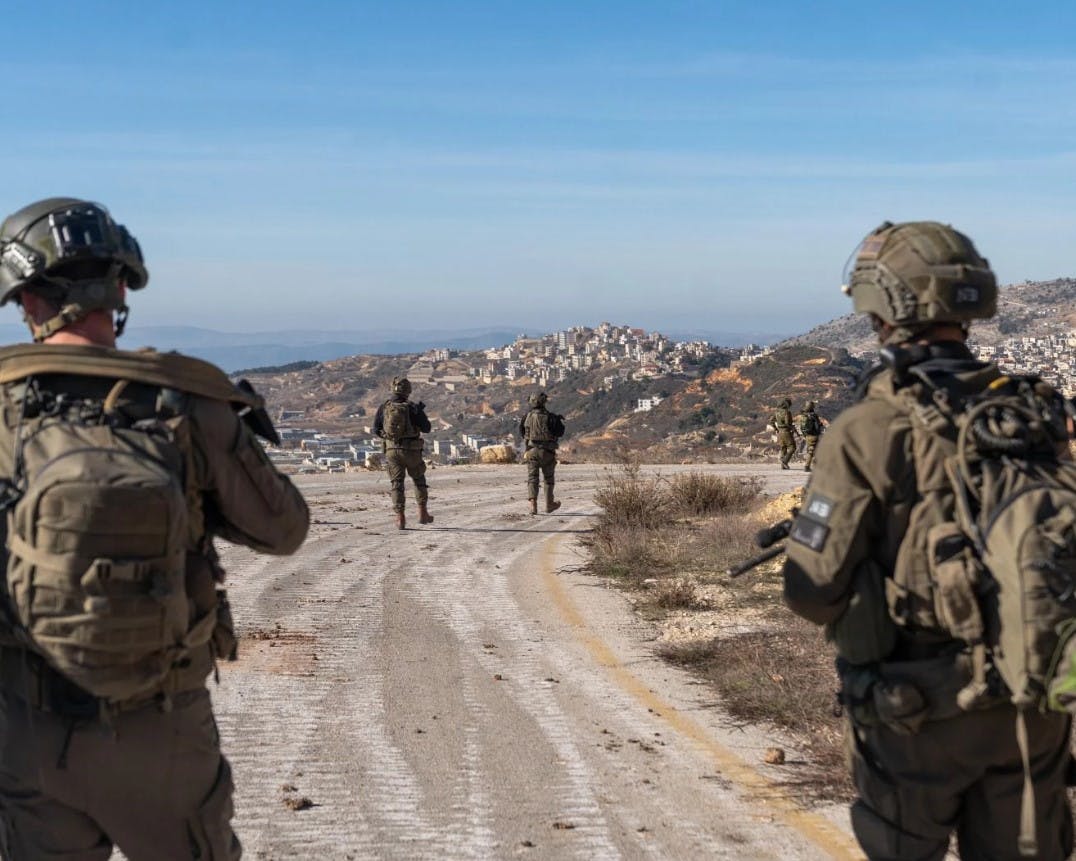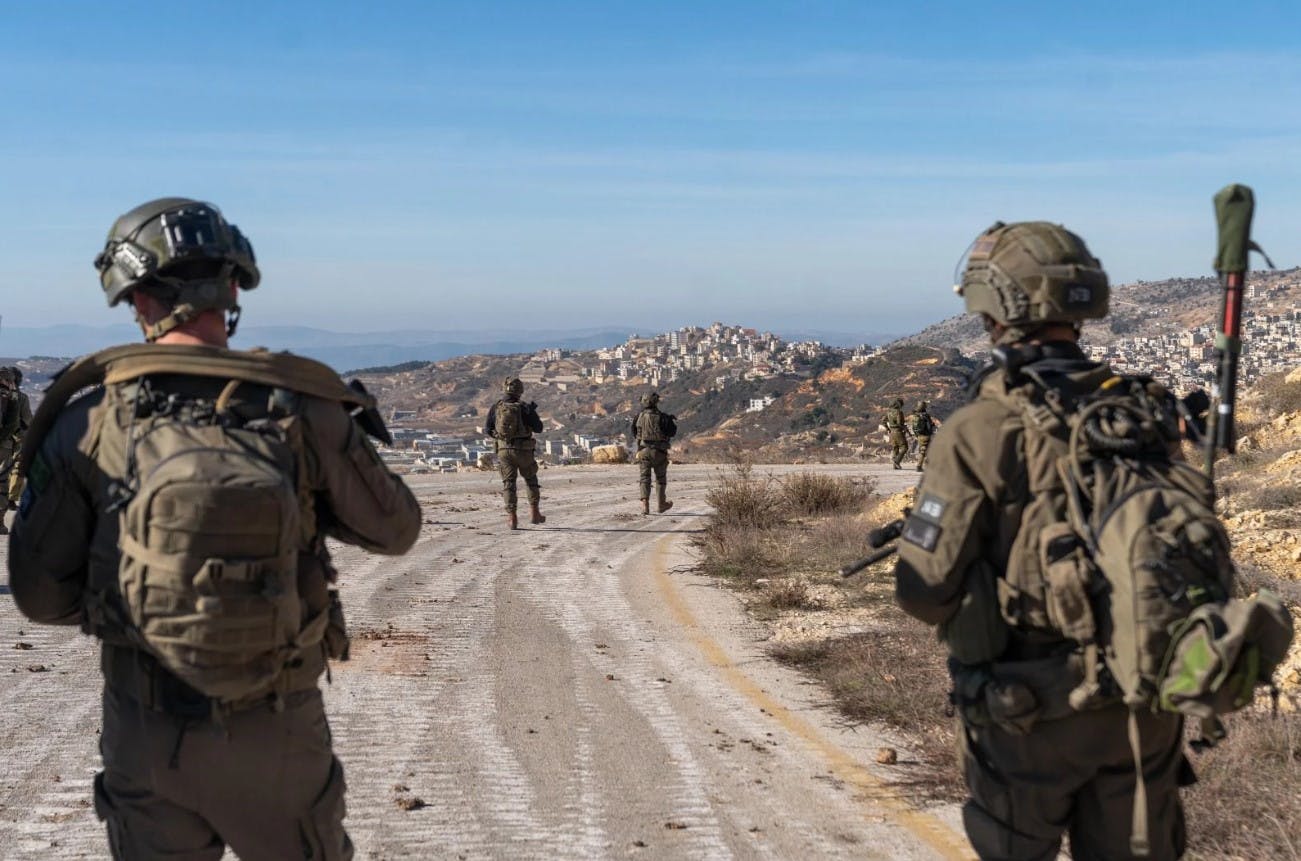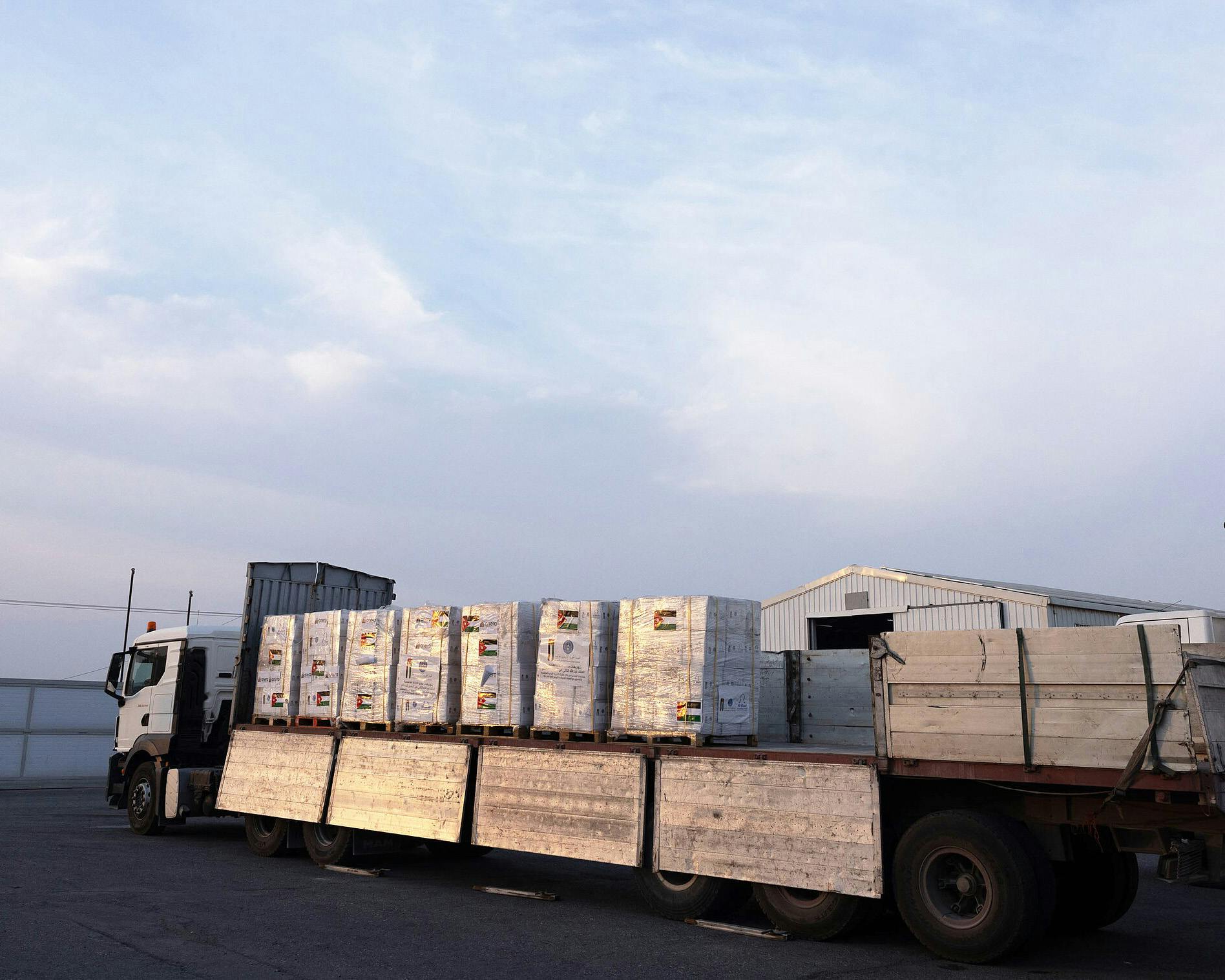Mission Accomplished: Jenin—Once the Heart of Terror—Now Quiet


Thursday, 8 May 2025 | The four tanks from the IDF's 188th Armored Brigade that entered Jenin with fanfare earlier this year—at the urging of political leaders—have recently been quietly withdrawn from the West Bank [Judea and Samaria] and redeployed to their more natural place: the ruined neighborhoods of Rafah in southern Gaza.
Soon, the active duty soldiers of the Nachshon Battalion will also leave the densely packed ghost neighborhood in the heart of what is often called the "terror capital" to take part in the expanded ground operation in Gaza recently approved by the Cabinet. Their last encounter with hostile forces in Jenin occurred four months ago, and since then not even riots have broken out. The quiet will now be handed over to reservists, many of whom are being called up for their fifth or sixth round of duty within a year and a half.
A low dirt mound separates the bustling streets of Jenin from the refugee camp neighborhood, technically part of the city itself. The camp is located in the northernmost tip of the West Bank, near Afula. Modern high-rises and shopping centers surround the camp, which sits at a lower elevation. Its narrow alleyways closely abut Jenin’s city streets on all sides.
Inside the city of Jenin, there's prosperity and normalcy: the malls and schools are open and, as Ynet reported about a month ago, the IDF has resumed allowing Israeli Arabs to spend millions of shekels there every weekend on shopping sprees. In the small, infamous bubble of the refugee camp, a few dozen IDF soldiers remain permanently stationed, supported by male and female Border Police officers from Unit 23.
These troops have effectively been living inside the camp for five months, although their actual operations now take place outside the city—focused on arrest raids in nearby villages, where, according to Central Command estimates, several dozen terrorists are still hiding, about 10 of whom are considered to have "blood on their hands."
Meanwhile, the soldiers feel at ease, surrounded by graffiti of Stars of David on building walls and newly bulldozed roads created through the demolition of around 200 structures. In shops around the neighborhood, dusty shelves still display electronics and food items. Many of the approximately 3,000 Palestinian residents who were displaced from the camp remain disappointed with the Palestinian Authority's proposed solutions, such as temporary housing on farmland.
Four months after the IDF seized control of two refugee camps in the West Bank, commanders estimate that only a few dozen fugitives from the Jenin camp remain on the run—eight of them considered high-value targets. Nachshon Battalion fighters from the Kfir Brigade are now in their final days in Jenin before being redeployed as regular infantry in Gaza. Contrary to earlier plans, they’ll be replaced by reservists. In recent months, the regular troops have alternated between routine security duties and "mini-maneuvers"—two-and-a-half-week stays inside seized Palestinian homes in the camp (dubbed "identifications"), followed by four-day breaks at home.
“The conditions here for the troops are good, the food is decent, and we’re already deep in preparations for the major operation planned in Gaza,” said the battalion’s commander, Lt. Col. G. The last armed encounter his forces faced in Jenin was four months ago, and since then, not even disturbances have occurred—despite dozens of soldiers effectively living in the hostile 1.5-square-kilometer [0.6 sq. mile] camp surrounded by the urban sprawl of Jenin.
As the IDF gears up for a wider offensive in Gaza and commanders count every reservist willing to answer a fifth or sixth emergency call-up in under two years, the army made an unusual move today: it invited journalists to the Jenin refugee camp without any specific reason.
According to commanders, the first two phases of Operation Iron Wall—achieving operational control of the camp and clearing its structures—were completed successfully two months ago. Since then, troops have focused on arrest raids and pursuing dozens of remaining militants who fled the camp to nearby villages. These fugitives are now without their home turf and far from the narrow alleyways where they once operated more than 100 surveillance cameras to track IDF patrols and time their roadside bombings with deadly precision.
“The camp is clear of hostile forces,” said one commander. “We demolished around 200 buildings not to destroy, but to eliminate enemy infrastructure—now and in the future—that could endanger our forces. It also allowed us to create roads for troop movement and casualty evacuation. After Operation Defensive Shield 23 years ago, the militants learned lessons and built barriers on those roads to prevent military vehicles from maneuvering.”
According to IDF figures, 102 terrorists have been killed so far in the current operation in northern Samaria; 320 have been arrested; and 14 airstrikes have been carried out, including by fighter jets. The operation has also led to a sharp drop in both threat alerts and actual attacks. A total of 338 weapons have been seized. The most recent Ramadan [one of the Five Pillars of Islam when stringent disciplines are observed], just a month ago, was reportedly one of the quietest in the West Bank in a decade. During Passover, 41,000 Israelis visited the Tomb of the Patriarchs in Hebron, and about half of all IDF counterterror operations (arrests and weapons seizures) in the West Bank now take place in the Hebron and Bethlehem areas.
Since the start of the operation, around 450 weapons have been seized, along with the destruction of hundreds of improvised explosive devices. Dozens of homes that served as weapons labs have been demolished. As part of the effort to open new roads for military access, approximately 100 buildings in Jenin and another 100 in Tulkarm and Nur Shams have been razed. Since the war began, about 930 militants have been killed in the West Bank, and some 2,050 weapons have been seized.
The IDF said: “To prevent terror from reestablishing itself in northern Samaria, the army is making changes to the camps, including opening roads to ensure freedom of movement and operational flexibility for our troops. As part of this plan, Central Command has announced its intention to demolish additional buildings. These demolitions are the result of thorough evaluations and are limited to the minimum necessary to guarantee security.”
Business as Usual in Jenin City
Inside the damaged and deserted refugee camp, the sense of security among the soldiers is palpable. They enter and exit the area in armored vehicles—sometimes even without protective netting—using the city’s main roads in broad daylight, without being pelted by stones. The army cites Israel’s “carrot and stick” strategy, led by political authorities and first reported by Ynet two months ago. Just last weekend, Israeli Arabs contributed NIS 17 million [USD 4.75 million] to Jenin’s economy thanks to the reopening of the Jalama crossing, allowing them to shop in the city formerly dubbed the “terror capital.”
“The malls in Jenin are packed, the stores are bustling, the schools are all open—and that’s not something to be taken for granted, considering there’s a permanent IDF force operating inside the city’s refugee camp,” said an IDF official. “We have solid coordination with the Palestinian security forces in the area. In their last major operation here a year ago, they couldn’t even advance past the second row of buildings due to heavy militant resistance. Six of their officers were killed. What they did in six weeks, we’ve done in 24 hours.”
Alongside the IDF troops, a full Border Police company—Unit 23—is permanently stationed in the city. These male and female officers, trained to a similar level as IDF border infantry, protect reporters visiting the camp. Their presence has long become routine. “We have the advantage of continuity, while IDF battalions rotate in and out frequently,” said one Border Police officer. “We carry out every type of mission, which helps bolster the IDF’s manpower.”
Maj. G., the operations officer for the Menashe Brigade, looked at graffiti sprayed by soldiers on the walls of deserted Palestinian homes. “We handle any unusual incidents, fix things if needed, and repaint. Everything we destroyed had a reason. I don’t know when—or if—the 3,000 Palestinians who lived here will return,” he said.
Half of Freed Prisoners Returning to Terror
Meanwhile, Central Command is also dealing with the 408 prisoners recently released to the West Bank as part of the latest hostage deal with Hamas. Early indications suggest that some are already trying to return to terrorism. Statistics are stark: 82% of those freed in the 2011 Gilad Shalit deal resumed terrorist activity, as have about 50% of those released in the first round of the 2023 hostage deal. From a security standpoint, the military prefers to have released prisoners in the West Bank rather than Gaza, as the IDF has full operational freedom to act in the West Bank at any time and in any location.
“They’re under tight surveillance, and we interrogated and warned them before their release,” said a senior IDF source. “Zakaria Zubeidi, for example—the militant most associated with Jenin—is now busy with political meetings in Ramallah. He doesn’t come here anymore. And he knows that if he returns to terrorism, it’ll be at his peril.” The commander of Central Command, Maj. Gen. Yaki Dolf stated: “Any terrorist who returns to terrorism has only himself to blame.” He explained that Operation Iron Wall is aimed at dismantling the terrorist system from its roots, starting with achieving operational control over key strongholds like Jenin. “We’re systematically pursuing the fugitives with intelligence and keeping track of every movement route. As a result, we now can operate anywhere, anytime—even in the heart of the refugee camps.”
The IDF estimates that the two battalions added to the northern West Bank for holding the camps may be withdrawn by year’s end, once operations are complete and all wanted fugitives have been arrested. Ultimately, this will be a political decision. Regardless, the four tanks deployed to the area at the beginning of the operation, under political pressure, have long since been removed and sent to Gaza, where they are relevant to combat, not just photo ops.
(This article was originally published by Ynetnews on May 8, 2025. See original article at this link.)
https://www.ynetnews.com/article/s11jasfegx#autoplay
License: Wikimedia
Related Resources

Discover Your Purpose and God’s Heart For You
In today's divided, turbulent world, it's essential for the Church to rediscover God's heart. Our free e-book, authored by a seasoned expert with three decades of experience in Israel, delves deep into the teachings of Jesus (Yeshua) to reveal God’s principles of love and purpose. Learn how embracing these truths can bring significance and impact to your life, even amidst chaos. Subscribe now to receive your free copy and embark on a journey of transformation.




